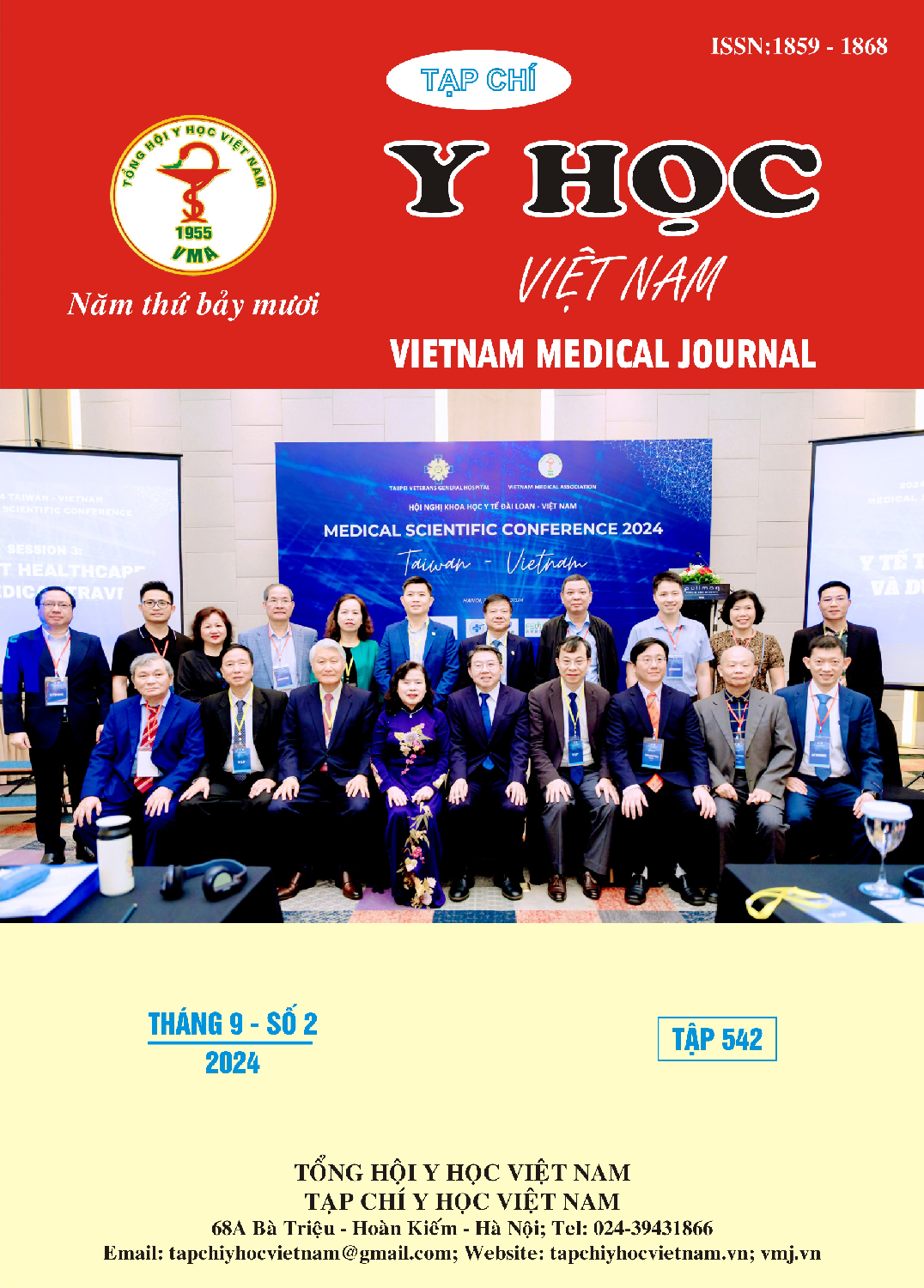EXPLORING SOME FACTORS RELATED TO SENSORY PROCESSING DISORDERS IN CHILDREN WITH AUTISM SPECTRUM DISORDER
Main Article Content
Abstract
Objective: To describe the characteristics of sensory processing disorders and investigate related factors in children with autism spectrum disorder (ASD). Subjects and Methods: A cross-sectional descriptive study of 75 pediatric patients with ASD treated at the National Children's Hospital from August 2021 to October 2022. Results: Auditory sensory processing disorder was the most common (81.3%), while interoceptive sensory processing disorder was the least common (20%). The risk of tactile sensory processing disorder in children under 24 months was 8.17 times higher compared to children over 36 months (OR = 8.17; 95% CI: 1.42–47.02) and 0.21 times lower in children with eating disorders (OR = 0.21; 95% CI: 0.05–0.79). The risk of vestibular sensory processing disorder in children under 24 months was 13.13 times higher compared to children over 36 months (OR = 13.13; 95% CI: 1.92–89.52) and 5.09 times higher compared to children aged 24–36 months (OR = 5.09; 95% CI: 1.04–24.86), and 0.15 times lower in children with eating disorders (OR = 0.15; 95% CI: 0.03–0.71). The risk of visual sensory processing disorder was 0.24 times lower in children with eating disorders (OR = 0.24; 95% CI: 0.07–0.82). The risk of gustatory sensory processing disorder in males was 4.79 times higher than in females (OR = 4.79; 95% CI: 1.10–23.93). The risk of olfactory sensory processing disorder in children with behavioral disorders was 4 times higher (OR = 4.00; 95% CI: 1.37–11.65). No association was found between sensory processing disorders and the severity of ASD (p > 0.05). Conclusion: The most prevalent sensory processing disorder in children with autism spectrum disorder (ASD) is auditory sensory processing disorder, whereas interoceptive sensory processing disorder is the least common. The risk of developing various sensory disorders may be influenced by the age of diagnosis, gender, and the presence of eating or behavioral disorders. No correlation was found between sensory processing disorders and the severity of ASD.
Article Details
Keywords
The factors related to sensory processing disorders, sensory processing disorders in children with autism spectrum disorder, ASD.
References
2. Le Couteur A, Rutter M, Lord C, et al. Autism diagnostic interview: a standardized investigator-based instrument. J Autism Dev Disord. 1989;19(3):363-387. doi:10.1007/BF02212936
3. Lord C. Follow-Up of Two-Year-Olds Referred for Possible Autism. J Child Psychol Psychiatry. 1995;36(8): 1365-1382. doi:10.1111/j.1469-7610.1995. tb01669.x
4. Osório JMA, Rodríguez-Herreros B, Richetin S, et al. Sex differences in sensory processing in children with autism spectrum disorder. Autism Res Off J Int Soc Autism Res. 2021;14(11):2412-2423. doi:10.1002/aur.2580
5. Jk K, Mh T, Cr G, et al. The pattern of sensory processing abnormalities in autism. Autism Int J Res Pract. 2006;10(5). doi:10.1177/ 1362361306066564
6. Novakovic N, Milovancevic MP. THE RELATIONSHIP BETWEEN SENSORY PROCESSING AND ANXIETY ON CARS SCALE IN AUTISM SPECTRUM DISORDER. :12. https://scindeks-clanci. ceon. rs/data/pdf/0350-2538/2015/0350-25381502139N.pdf
7. Brang D, Ramachandran VS. Olfactory bulb dysgenesis, mirror neuron system dysfunction, and autonomic dysregulation as the neural basis for autism. Med Hypotheses. 2010;74(5):919-921. doi:10.1016/j.mehy.2008.11.048
8. Cermak SA, Curtin C, Bandini LG. Food selectivity and sensory sensitivity in children with autism spectrum disorders. J Am Diet Assoc. 2010;110(2): 238-246. doi:10.1016/ j.jada.2009.10.032


